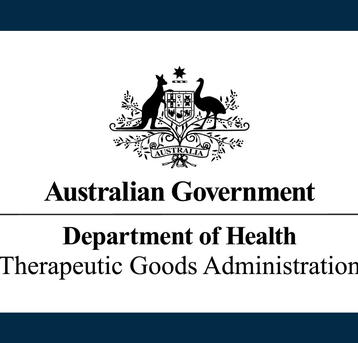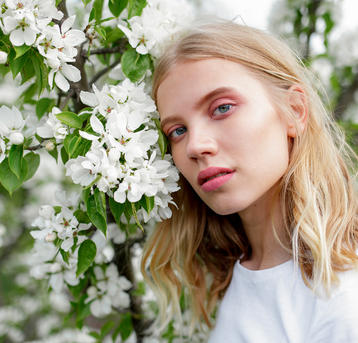With most COVID-19 restrictions finally eased, things are starting to look a lot more normal for the beauty industry.
However, the past two years have undeniably had a major impact on everything that makes up the world of beauty – so much so that it’s beginning to look like a lot of what we’ve come to know and expect during these times may actually stick around.
Consumers, for instance, have driven sales of skincare and helped change the makeup industry entirely. Many beauty brands and PR agencies have also become more resilient, having pushed themselves to their limits during these challenging times. Consequently, they’ve discovered how strong they really are and have learnt how to navigate business in different, yet still effective ways.
Below, BD chats to some well-known industry professionals, who reveal everything they’ve been dealing with during the pandemic and what they predict now that we’re learning to move forward with our lives.
BEAUTY TRENDS
Skincare
Ego Pharmaceuticals’ marketing manager of Australia & New Zealand, Tenille Taylor, said that the skincare industry has changed immensely during the pandemic. Below, she goes into more detail about the changes and what we can expect in the future.
How consumer purchasing habits have changed
“As a result of the last two years, we have seen that consumers and healthcare professionals want to support Australian made products more than ever before,” Taylor said. “An example of this can be seen in pharmacies where brands and retailers are using point of sale to help consumers identify Aussie products.”
During the pandemic, Ego experienced a huge increase in traffic across all its websites as consumers turned to online searches for not only product purchasing, but skin health related information.
“Due to Telehealth becoming the dominant method for GP visits during the pandemic, consumers turned to their local pharmacists for face to face skin advice,” she said. “The pandemic highlighted how crucial pharmacies are to the community and we will continue to see increased skincare purchasing in pharmacies.”
Products that have increased in popularity
“Obviously our hand sanitiser range, Aqium, performed exceptionally well during the height of the pandemic,” Taylor said. “Particularly Aqium Ultra, which contains four different moisturisers to help hydrate the skin.
Due to the increased washing of hands, and sanitiser use, consumers were after gentle but effective skincare that looks after the integrity of the skin. This led to our QV range of soap free cleansers and moisturisers growing in popularity.”

The biggest trends to watch out for
“People are increasingly thoughtful about which brands and companies they buy from, looking for those that align with their values,” Taylor said. “We are proud to be launching a new natural skincare range called etchðos. The packaging for this range is made from recycled milk bottles.”
Ego also continually focuses and strives to improve on its responsible environmental and sustainable business practices, including manufacturing more efficiently right here in Australia.
Many beauty brands are also currently on the same page, considering how environmentally conscious consumers have become and how important sustainability is to the brands themselves.
Skinification of hair care and makeup
Skinification is a modern approach to certain beauty categories, such as hair care and makeup, that consists of treating these areas with the same care as your face. The formulas use high quality skincare-grade ingredients – the type usually reserved for skincare products.
And with isolation delivering more time to spend taking care of ourselves, it’s not shocking that ‘skinification’ has really intensified over the past few years. In fact, it looks like a trend that’s here to stay.
When it comes to hair care, Grow’s expert hair stylist, Belinda Keeley, of Chumba Concept Salon, says it’s all about enhancing your routine beyond just a basic shampoo and conditioner, and moving towards intuitive products like scalp scrubs and hair masks.
“Skincare for the scalp is a culmination of consumers becoming more educated about their hair and the ingredients that they use,” she said. “Skin and hair care also falls into the category of health and wellness, and people now realise that if you nourish your scalp, it’s not only going to make your hair look better, but it will be healthier too. Brands are also tapping into this fact by launching products with more skincare-like ingredients and with better efficacy.”
One example of a product featuring a sophisticated formula that implements a great routine for the scalp is Grow’s Stimulating Scalp Scrub. This scrub is intuitively formulated to detox and invigorate the scalp and hair. By stimulating circulation, gently removing dead skin cells and eliminating product build-up at scalp level, it works like an exfoliant for your scalp, in the same way that a face or body exfoliant would and can replace your shampoo step in the routine.

With consumers making a dramatic shift from makeup to skincare at the start of the pandemic, many were prompted to ditch their heavy foundations for lighter, hybrid products or those containing skin-friendly ingredients. Brands quickly caught on (although many were ahead of the game) and have been focusing on cosmetics with good-for-you formulations ever since.
BD also recommends: Nude by Nature Hydra Serum Tinted Skin Perfector, jane iredale HydroPure™ Hyaluronic Lip Gloss and Skin O2 Mineral Foundation Compact.
INDUSTRY PREDICTIONS
Founder and director of Georgie Quigley Public Relations, Georgie Quigley, said she believes we will see a return to normal, but this return will be different to the normal that we knew pre-pandemic.

The future of events
“I think after a topsy-turvy last two years that saw a mix of in-person events (between variants) and virtual events, that brands are going to make the most of what seems to be slowly resembling normality and in-person events are going to be back on the menu - and in abundance!” Quigley said.
“Brands & PR agencies got so creative during the last two years with what we were able to do, but I think few would argue with the value and enjoyment of experiencing events in person.”
As for digital events, Quigley thinks they absolutely will still have their place – particularly for small brands and for those media who are not based in major cities like Sydney and Melbourne. Digital events have also allowed small brands to compete with established brands that have big budgets to put on events given the significantly reduced budget required to host an event via zoom, she said.
What else to expect with the return of normality
“I think what we will largely see is that the return to normal is different to the normal we once knew,” Quigley said. “When I first started working in PR, given almost everyone worked in the office from 9-5pm Monday to Friday, we often conducted mass product send outs to offices, knowing that media would be there to receive.
Since the pandemic kicked off, PR agencies have changed their strategy to contact media first about the creative product drops to check their best address for deliveries and also whether they would like to receive prior to sending and I think we’ll carry this more tailored approach with us that will see less waste.”
Has the pandemic impacted relationships between the media and brands/PRs?
“Absolutely,” Quigley said. “I think it is something that has really established a sense of relatability and comradery. We’ve all gone from working in established work spaces from 9-5, to rather unglamorous set ups with our dining table/turned desk, trying to create as functional a working environment as we can and get our work done while balancing young kids, your partners/housemates, meeting times and homeschooling.
I don’t think it has been easy on anyone and something we have all come to relate to. I think everyone has become a lot more open with sharing our struggles and increased our ability to be more personable. Moving forward, I think it will simply allow us to ask the questions and not be expected to always have the answers as we establish the new normal.”
BRAND INSIGHTS
Beauty brands have also had to adapt significantly during the pandemic. They’ve had to rethink existing strategies, be open to change and practice extreme resilience (just to name a few things).
To gain more of an insight into how brands have been coping and what measures they’ve taken to overcome obstacles, BD spoke with Ella Baché’s CEO, Pippa Hallas, who revealed that running a national business through a pandemic has not come without its challenges.

The impact on business
“Physically closing the doors to our salons and David Jones’ stores for months was a difficult trade, but allowed us to circle in on our digital channels – a place where we experienced immense growth,” Hallas said. “Thankfully, when the stores were able to open and trade as normal, we experienced great growth – and this to me reiterates that people will continue to use good skincare throughout trying times, as consumers will gravitate towards businesses that they know and trust.”
According to Hallas, the supply chain has also been extremely challenging with all the disruptions caused across the globe, but thankfully the fact that Ella Baché manufactures locally here in Australia has been more important than ever.
How to navigate leading a business through a pandemic
When COVID hit like a tidal wave the first-time around, Hallas knew the brand needed to pivot, as there was simply no other choice. It had to physically close the doors to over 120 salons across Australia.
“When it came to leading a business through these times, the only channels that were operating were the digital ones, so we had a terrific opportunity to launch new digital platforms, allowing therapists and customers the ability to navigate expert skin consultations all from the comfort of their own home,” she said.
“As our therapists stepped out of their salons, they stepped into their social channels and educated their clients. We also used this time to educate as many therapists and students as we could. It was a time of growth and giving that allowed our teams to feel a sense of community. This is something we will take with us into the future.”
As for what advice Hallas would give to other brands in the same boat, Hallas advised that we live in a VUCA world: volatile, uncertain, complex, and ambiguous, and that’s not going away.
“As a business leader, you must get good at the unknown and scenario planning, as quite simply, we are writing the future with no past to reference. You have to dig deep and be agile and embrace technology.”
The future of Ella Baché
The brand has continued to innovate through these times and has stayed focused on its strategies.
“This saw us launch our all new retinol range and facial treatment last year,” Hallas said. “With 18 active ingredients and 0.5% encapsulated retinol, it has quickly become our customers go-to; it is during these times that skincare has proven its resilience, it is something consumers will always gravitate to, and something we will always work to innovate, ensuring we provide our customers with the best possible products on the market.”





